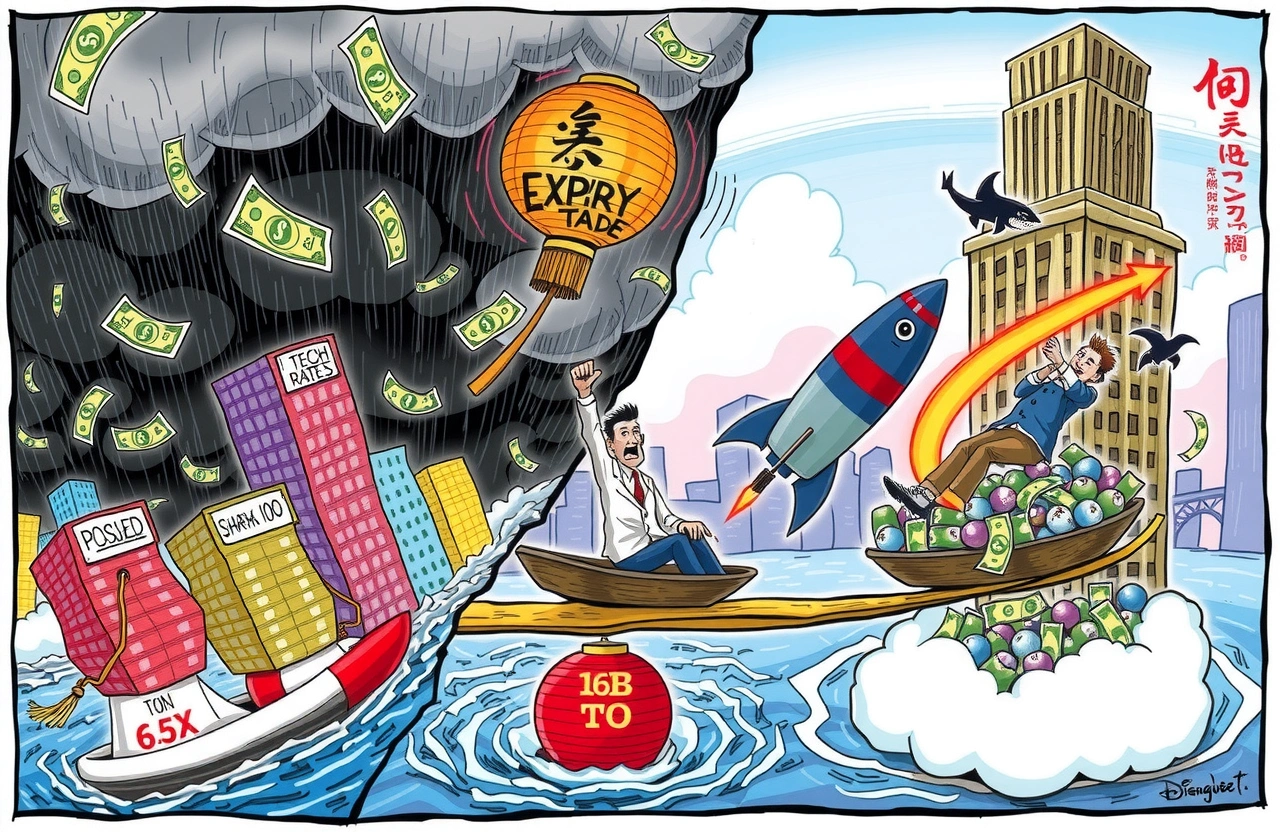Key Takeaways
- – Hedge funds accumulated $16 billion in short positions against Russell 2000 small-cap stocks in July, nearing record highs
- – Small-cap companies face heightened vulnerability to economic slowdowns due to higher debt sensitivity and weaker financial buffers
- – The 26% Russell 2000 rally since April contrasts sharply with hedge funds’ recession positioning
- – Persistent inflation and “higher for longer” interest rates threaten small-cap profitability models
- – Short sellers risk potential squeeze scenarios if resilient economic data triggers sharp price reversals
Hedge Funds Place Historic Bets Against Small-Cap Resilience
Wall Street hedge funds are accelerating bearish bets against U.S. small-cap stocks at unprecedented levels, positioning portfolios for potential economic weakness despite recent market optimism. According to Goldman Sachs trading data, short positions against the Russell 2000 index reached $16 billion in July – the highest level since 2021 – signaling deep-seated concerns about smaller companies weathering a possible slowdown. This institutional positioning creates a dramatic divergence within equity markets: Investors simultaneously hold Nasdaq 100 futures near historical highs, creating the widest performance gap ever recorded between big tech strength and small-cap vulnerability.
The fundamental economics behind these moves reveals small-cap companies’ disproportionate exposure. With typically weaker balance sheets and limited financing flexibility compared to S&P 500 constituents, these smaller enterprises face amplified challenges from inflation persistence and restrictive monetary policy. PivotalPath CEO Jon Caplis (Jon Caplis) observed: “Both fundamental and quantitative funds see small caps as prime beneficiaries if downside economic scenarios materialize. They’re weaker hands carrying heavier liabilities in turbulent seas.” Market dynamics now suggest traders increasingly view recession signals as catalysts for capital rotation.
Economic Weak Spots Driving Small-Cap Bearishness
Debt Structure Vulnerabilities
Small-cap financing creates perfect storm conditions during tightening cycles:
- – 87% carry floating-rate exposure versus 42% for large-caps
- – Average interest coverage ratios 30% below pre-pandemic levels
- – Refinancing walls approach with $200B maturing before 2026
Trade Policy Impacts
While briefly benefiting from “reshoring” sentiment during Trump-era tariffs, small-caps now contend with:
- – Global supply chain fragmentation increasing procurement costs
- Minimum 18% higher domestic input expenses versus multinational competitors
- Limited currency hedging capabilities during dollar volatility
Profit Margin Compressions
The combined weight of price pressures and revenue deceleration hits cash-strapped companies hardest. Bureau of Economic Analysis shows small businesses reporting:
- Operational profit declines averaging 11% YoY
- Shrinking net margins down to 4.2% industry average
- Wage growth consuming 35% of revenue gains
Russell Rally Fuels Empty Calorie Debate
The seeming contradiction between Russell 2000’s 26% rebound since April lows and hedge funds’ deepening shorts creates market interpretation clashes. Indicators fueling skepticism include:
- Declining average daily trading volumes suggesting weak participation
- Constituent-level dispersion showing fewer than 30% outperforming index gains
- Insider selling activity reaching highest percentage since pre-COVID
Franklin Templeton’s Max Gokhman (Max Gokhman) notes: “The dangerous confluence exists between technically overbought positioning and fundamentals deteriorating faster than analysts recognize. Most shorts position for lagging reaction times.” Recent rate-sensitive movements validate sensitivity – small-caps lost $3.6B market capitalization within hours of July’s hotter-than-expected CPI print. Comparatively, large-cap industrials gained $14.8B during the same volatility event, suggesting wider dispersion drivers.
Balancing Short Exposure Against Macro Risks
Squeeze Scenario Catalysts
The historical memory of 2021 meme-stock frenzy adds caution to bearish positioning extremes. Conditions that could trigger violent reversals include:
- Rate-cut acceleration: September reduction probabilities jump
- Synchronized global manufacturing rebound
- Energy price normalization cooling CPI
Analysis cited by Goldman Sachs reveals concentrated positioning heightening vulnerabilities – covering just $2B in short exposure would add 1.8% upward pressure absent fundamental changes.
Defensive Positioning Alternatives
Strategies used by hybrid macro funds include:
- Pairs trading: Short Russell 2000/long Treasury hedges
- Volatility instruments capturing asymmetry
- Dispersion trades isolating small-cap laggards
Historical Small-Cap Recession Resilience
The Russell 2000 faced severe drawdowns during economic transitions:
| Period | Index Performance | Large-Cap Differential |
|---|---|---|
| Dot-Com Bust | -47.2% | +33.1% underperformance |
| 2008 Crisis | -54.1% | +19.3% underperformance |
| COVID Drop | -41.8% | +17.6% underperformance |
The calculus evolves however – during 2022 Federal Reserve hiking onset, Russell 2000 outperformed S&P 500 by 260 basis points during inflation acceleration months. Economic transition periods produce nuanced leadership rotations reflecting market weighting of interest rate pain against recession probabilities.
Navigating Statistical Minefields
Capital deployment today requires parsing competing economic signals:
- Conflicting recession models show variant probability spreads
- Small-business optimism surging against corporate sentiment declines
- Initial jobless claims hovering near record lows
The hedge fund rush toward small-cap shorts reflects conviction that such divergence approaches resolution. These positions implode paradoxically however should America achieve soft landing navigation – precisely what large-cap positioning discounts. Critical monitoring includes:
- Q3 earnings revisions velocity
- C&I loan demand deterioration
- Supplier delivery PMI subcomponents
The unprecedented scale of hedge fund bearish bets signals sophisticated investors positioning portfolios beyond cyclical caution toward structural skepticism. Yet trapped between Russell 2000’s momentum traders and pessimistic hedge funds exists profound uncertainty resolution reward. Building balanced exposures requires monitoring micro-cap liquidity signals while resisting binary portfolio tilts. Investors tracking hedging flows should measure positioning extremes against evolving data narratives, recognizing historical inflection points often expose premature positioning extremes. Ultimately small-cap survival trajectories reveal truths hidden within macro aggregates.




